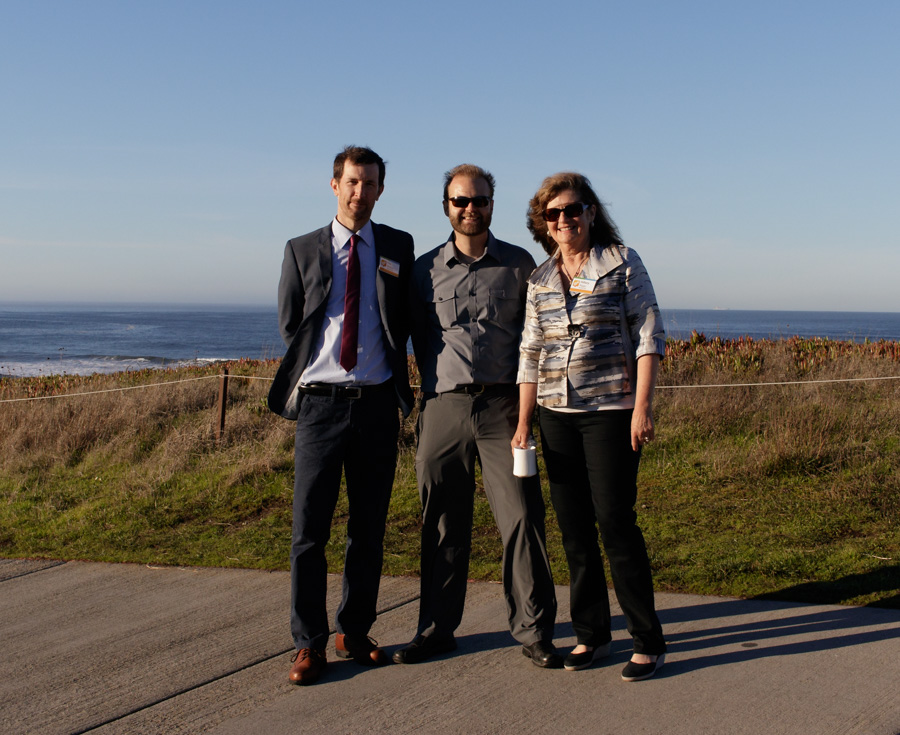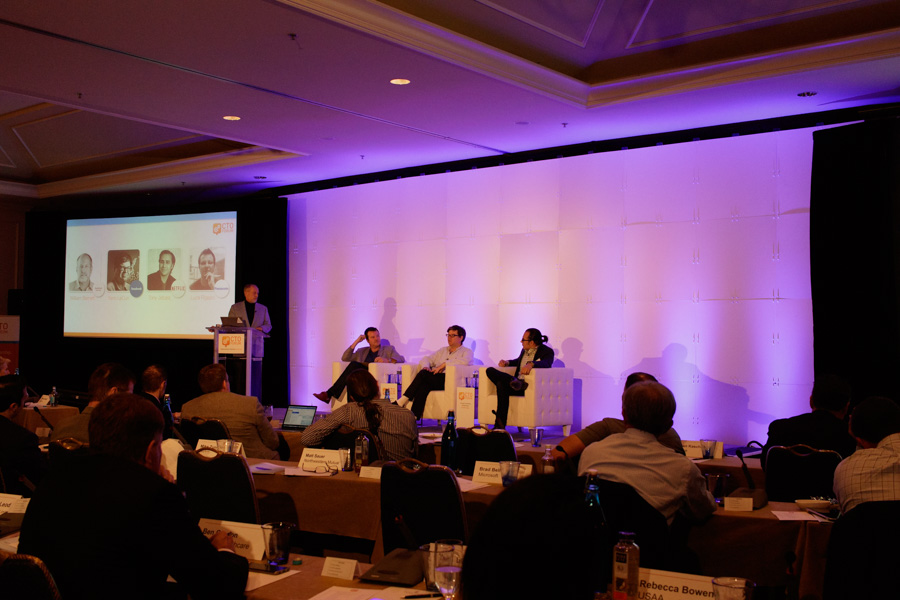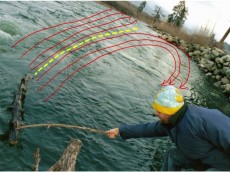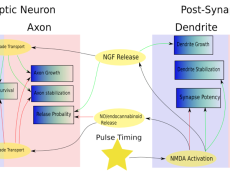I do not like disrupting others. I do not like to be disrupted. If I have no choice but to disrupt somebody, I ask to be excused before I do it and I apologize after I am finished. When I think of somebody who actually likes to disrupt others, I picture a small group of pre-pubesint kids snickering in the bushes while a flaming bag of crap sits on some unsuspecting grandmother’s door step.
Disrupt: (1) interrupt (an event, activity, or process) by causing a disturbance or problem. (2) Drastically alter or destroy the structure of (something).
I find it comical and a bit disturbing that the word has gathered such positive connotation in Silicon Valley. I think the word “innovation” is a better description for how many use the word. Others seem to think that “disruption” is what occurs when an incumbent or competitor fails to innovate—like walking into a street light because they did not bother to look where they were going. This is not disruption. Laziness perhaps. Inattentiveness certainly. Perhaps even a little arrogance—but surely not disruption. Indeed, if you read a little more into the subject, you will find that it has more to do with business models. Harvard Business Review has a good article on the subject, and makes it all quite clear:
“Disruption” describes a process whereby a smaller company with fewer resources is able to successfully challenge established incumbent businesses. Specifically, as incumbents focus on improving their products and services for their most demanding (and usually most profitable) customers, they exceed the needs of some segments and ignore the needs of others. Entrants that prove disruptive begin by successfully targeting those overlooked segments, gaining a foothold by delivering more-suitable functionality—frequently at a lower price. Incumbents, chasing higher profitability in more-demanding segments, tend not to respond vigorously. Entrants then move upmarket, delivering the performance that incumbents’ mainstream customers require, while preserving the advantages that drove their early success. When mainstream customers start adopting the entrants’ offerings in volume, disruption has occurred.
In other words, disruption is about business-models, and the use of the word stems from the second definition given above: to drastically alter or destroy the structure of (something). In this case the “something” is the incumbent business model, which may or may not be paired with a fundamental new product or technology and in fact may even be inferior (but more affordable). The conditions for disruption are ripe when the big incumbents focus on the big clients and ignore the little guys, thus opening up the opportunity for the smaller companies to service the smaller clients.
When invited to attend the CTO Forum Rethink Disruption conference as a “top disruptive startup” roughly six months ago, we naturally asked why? We were told that we were picked by an algorithm. “What’s the algorithm?”, we asked. We were told it was proprietary and that we should consider ourselves lucky. Well then! The setting was the Ritz Carlton in Half Moon Bay, right on the edge of an expansive golf course perched on top of cliffs overlooking the ocean. We were invited to set up a table for a few hours the first day, and one of us would get to attend the full conference. It was a sweet venue, no doubt about it. Why the heck not?

Knowm Team in Half Moon Bay for the Rethink Disruption Conference 2016
On November 3rd and 4th, 2016 at the Ritz Carlton in Half Moon Bay California, the conference took place. On Thursday morning we (Alex Nugent, Tim Molter and Hillary Riggs) set up our table among roughly a dozen other startups. We showcased our memristors with a live hysteresis loop demo, and engaged in many conversations about our memristor technology and plans for a technological disruption in low power machine learning hardware we are bringing to market called Thermodynamic RAM.
The conference room was small, but the stage was big and well lit. An attractive photographer roamed around the room snapping pictures while a massive video camera in the back caught the talks. Each talk began with a dramatic introduction with music that played as the speaker ascended the stage. For such a small room and audience, this was somewhat funny–an absurdity that appeared to actually embarrass some of the speakers. The first three rows of chairs were for the corporate executives. The last row was for the startups. Only the execs were invited to speak of their ‘disruptions’, but of course that makes sense. At $5,000 or more per ticket, money talks, as they say.
The event seemed like a dual-purpose venue for corporate executives. First, the corporate speakers got the opportunity to give talks on a well manicured stage with great lighting and sound effects. The execs also got to meet some potentially disruptive companies, perhaps make some connections that could lead to acquisitions or at least become aware of the companies that might disrupt them. Finally, let’s not forget the beautiful Ritz and a few rounds of golf. From our perspective as a start up, it was certainly more inviting than a lot of other invitations we have received.
After the exhibition of the “top disruptive startups” and breakfast, the main conference took place. William Barnett gave an insightful and entertaining talk which highlighted the point that disruptive technology comes not from consensus thinking, but rather non-consensus thinking. Non-consensus ideas are those risky ideas that exist at the tail ends of the distribution rather than in the center-located non-risky and boring ideas or incremental innovations. Unfortunately it is impossible to tell beforehand which non-consensus ideas turn into those sought after disruptive ideas, so you have to take the good with the bad and embrace the “foolish” ideas that also co-exist on the tails of the distribution curve. To foster disruptive ideas, you necessarily need to encourage “foolish” ideas. If you are a thinker and an inventor, you need to allow room for failures and foolish ideas as the disruptive ideas also come from the same creative origin. Once your organization has a consensus idea, you already missed the disruption boat!

Rethink Disruption 2016
A number of executives and engineers from many top companies and universities were in attendance, but I will cover a few that were most related to what we are doing here at Knowm which were two separate talks from IBM.
Both speakers, Dario Gil and Mukesh Khare from IBM Research, stated very clearly that IBM is pursuing neuromemristive “native machine learning” hardware to reduce the power consumption of IBM’s Watson by 10,000 to 40,000 times and are drawing from their internal manpower resources of over 1500 PhD scientists and 5000 engineers. When asked when this technology will be available, Mukesh quickly stated “5 to 7 years”. In order to differentiate their technology from more or less the same thing being developed elsewhere with various names, they are calling their future tech “resistive processing unit” or RPU for short. Dario was asked to define the biggest challenge he would task the members of the audience with and stated that we should be putting our energy into coming up with a way to use adaptive resistive elements to create a new foundational type of computing for “native ML”. Wow, this is what we’ve been saying now for over a decade when Alex planted the seeds of Knowm over 11 years ago and predicted the need for hardware that operates with the energy budgets of biology for machine learning applications. (unsurprisingly, IBM is one of the most frequent citers of our patents).
Overall we found the event a lot of fun, certainly interesting, and we are all glad to have attended. The dinner, lunches, hors d’oeuvres, and desserts were all very yummy. We drank a lot of wine at dinner, perhaps a little too much, and listened to a string trio from the San Fransisco Orchestra play some wonderful music. We watched the sunset over the pacific ocean, blue sky melding into amber with sea mist bursting into the air as the waves crashed into the cliff walls just below the resort. Disruption has never been so pleasant and tasty. No wonder it is all the rage in Silicon Valley.
















Leave a Comment